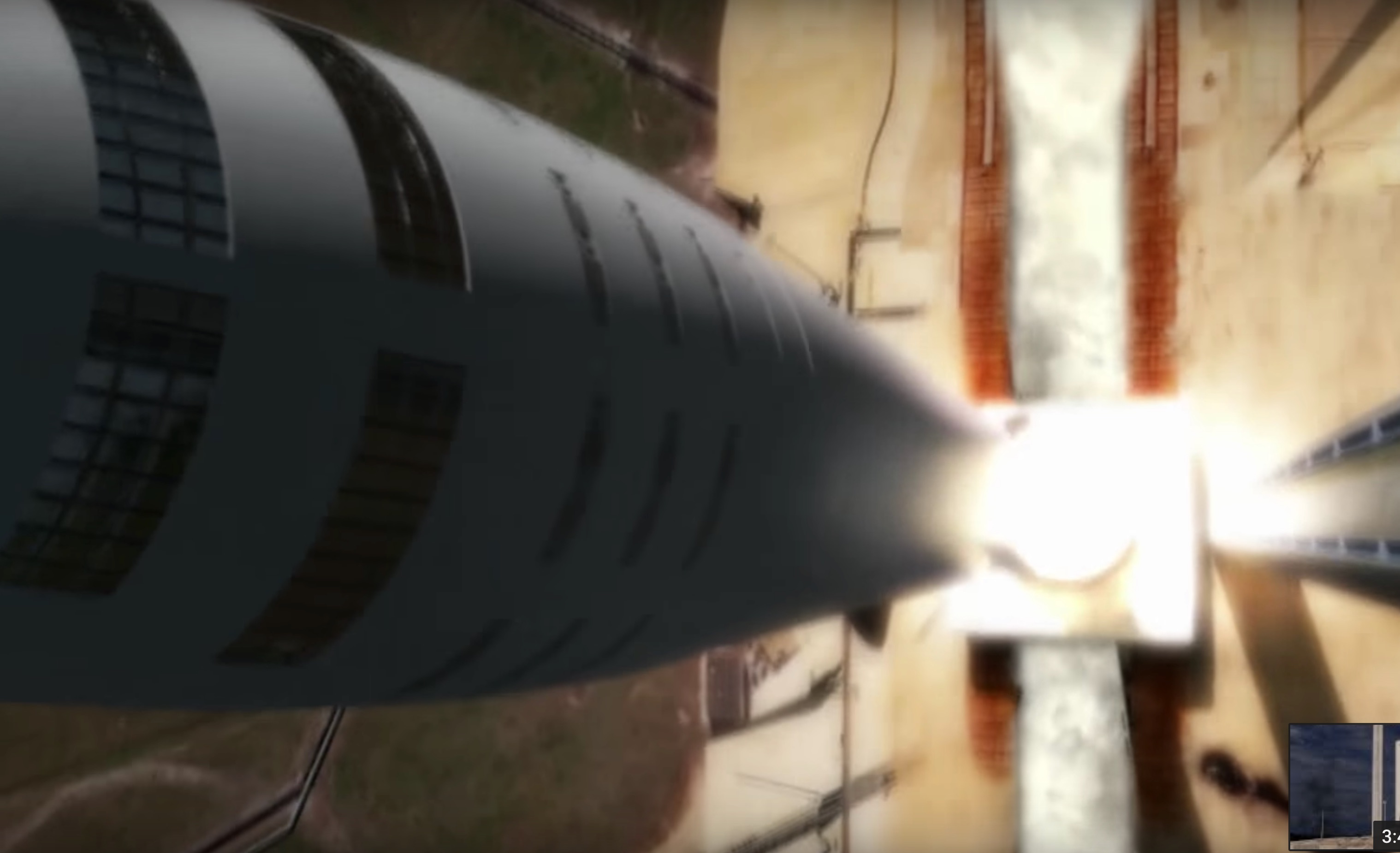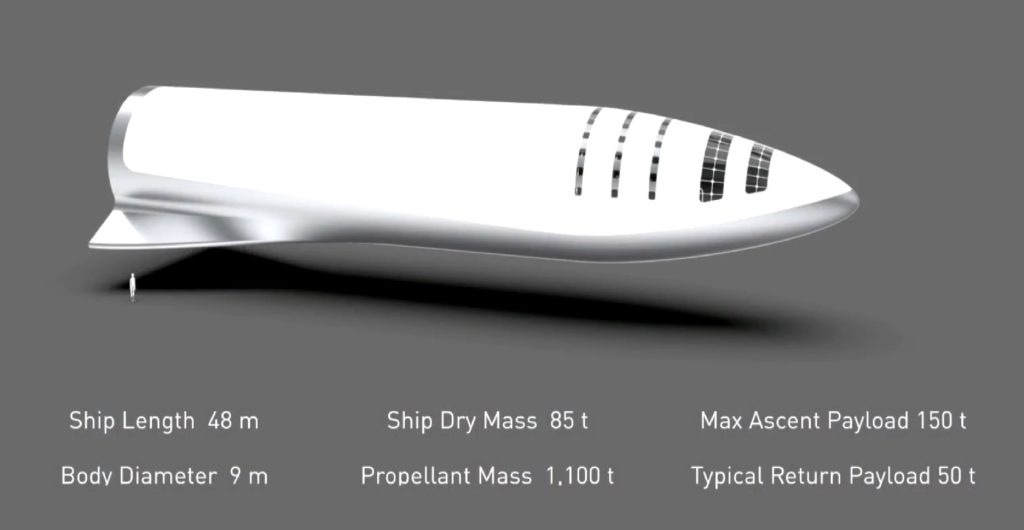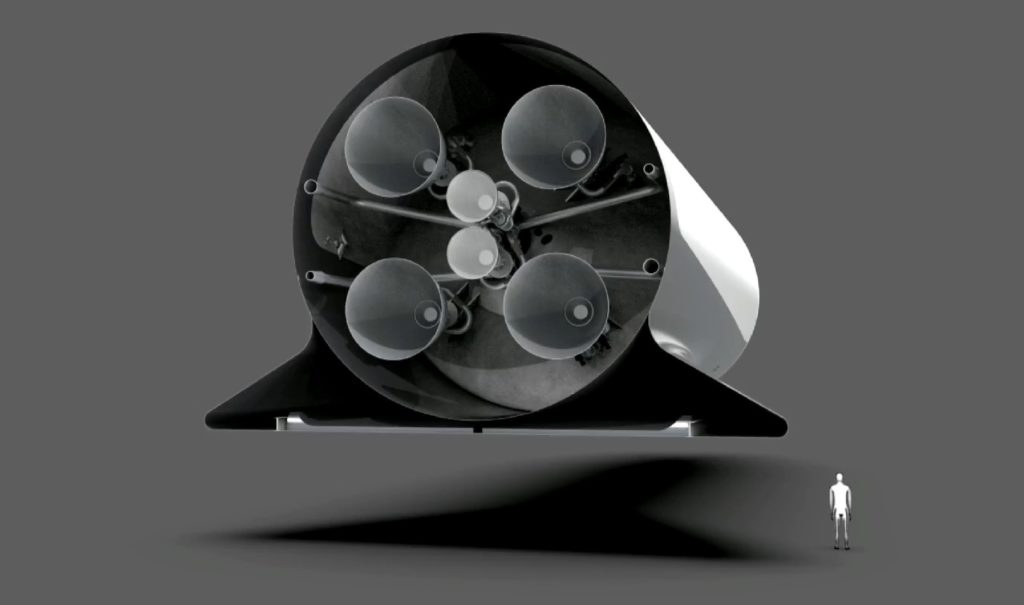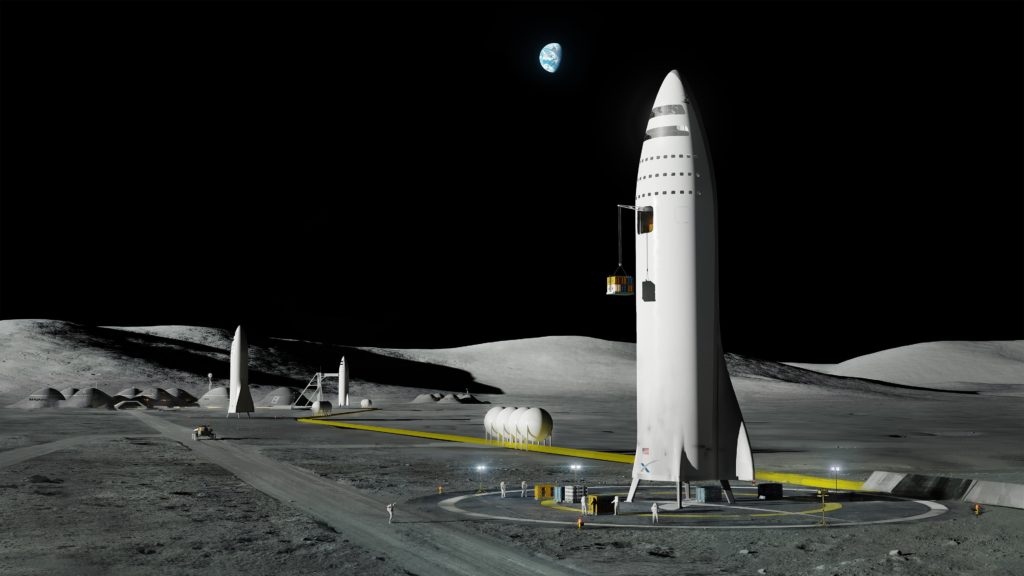

News
SpaceX will launch its Mars spaceship into orbit as early as 2020
First spaceship prototype already under construction
Speaking on a launch industry round-table at the Satellite 2018 conference, SpaceX President and COO Gwynne Shotwell revealed that the company intends to conduct the first orbital launches of BFR as early as 2020, with suborbital spaceship tests beginning in the first half of 2019.
Only six months after CEO Elon Musk first debuted the Interplanetary Transport System in Adelaide, Australia, a flood of recent comments from both executives have made it overwhelmingly clear that SpaceX intends to have its first spaceship ready for short suborbital test flights at the beginning of 2019. Considering Musk’s unprovoked acknowledgment at SXSW 2018 of his tendency towards overly optimistic timelines, the repeated affirmations of BFS test flights beginning in 2019 and now an orbital launch of the full BFR booster and ship in 2020 hold a fair deal more water than they did in 2017.

SpaceX’s subscale Raptor engine conducting a 40-second test in Texas. This engine will power both BFR and BFS. (SpaceX)
Breaking it down
These past few weeks have been filled with a number of similar statements from SpaceX executives like Shotwell, Musk, and others; all focused in part on the company’s next-generation launch vehicle, BFR (Big __ Rocket). Composed of a single massive booster and an equally massive second stage/spaceship (BFS), the rocket is meant to enable the affordable expansion of permanent human outposts on Mars and throughout the inner solar system by making good on the decades-old promise of fully reusable launch vehicles.
In order to succeed, the company will need to solve the problems that NASA and its Shuttle contractors never could.
- The relatively cylindrical BFS reduces complexity and lowers weight. (SpaceX)
- BFS (circa 2017) shows off its complement of SL and Vacuum Raptor engines. SpaceX is moving back to something similar to this. (SpaceX)
- SpaceX’s 2017 BFS (now Starship) delivers cargo to a large lunar base. (SpaceX)
To an extent, SpaceX has already matured the principles and technologies needed to reliably recover and reuse the booster stage of two-stage rockets, demonstrated by their incredible success with Falcon 9.
BFR is a whole different animal, partly owing to its massive size, huge thrust, and new propellant and tankage systems, but those problems are more technical than conceptual. SpaceX already knows how to reuse boosters, and that will apply to BFR once its several technological hurdles have been overcome. Designing and building the orbital spaceship (BFS), however, will undoubtedly be the most difficult task SpaceX has yet to take on. The safety and cost records of the only other orbital-class reusable second stage in existence, the Space Shuttle, are at least partially indicative of the difficulty of the challenges ahead of SpaceX.
In order to succeed, the company will need to solve the problems that NASA and its Shuttle contractors never could – they will need to build an orbital, crewed spaceship that can be reused with minimal refurbishment, can launch for little more than the cost of its propellant, and does so with safety and reliability comparable to the records of modern commercial airliners – perhaps the safest form of transport humans have ever created.

Space Shuttle Atlantis docked with the beginnings of the International Space Station. The Shuttle suffered several deadly failures and cost more than the expendable Saturn V moon rocket it replaced. (NASA)
Rockets do not easily lend themselves to such incredible standards of safety or reliability – airliners average a single death per 16 million flights – but SpaceX will need to reach similar levels of reusability and reliability if they hope to enable even moderately affordable spaceflight or Earth-to-Earth transport by rocket. Still, there can be little doubt that SpaceX employs some of the absolute best engineering expertise to have ever existed in the US, and their extraordinary personal investment in the company’s goal of making humanity multi-planetary bode about as well as could be asked for such an ambitious endeavor. According to Musk and Shotwell, the first spaceship is already being built and suborbital tests will begin as soon as 2019, while full-up orbital launches – presumably involving both the booster and spaceship – might occur just a single year later in 2020.
SpaceX's Shotwell: BFR will probably be orbital in 2020, but you should start seeing hops in 2019. (Grasshopper reference?) #satshow
— Caleb Henry (@ChenrySpace) March 12, 2018
Musk: People have told me that my timelines historically have been optimistic. I am trying to recalibrate. What I do know is we are building the first ship. We will be able to do do short flights in the first half of next year. It's a big booster and ship. Saturn V thrust x2.
— Michael Baylor (@MichaelBaylor_) March 11, 2018
It appears that we will find out sooner, rather than later, if SpaceX has truly found a way to lower the cost to orbit by several orders of magnitudes. Follow us for live updates, behind-the-scenes sneak peeks, and a sea of beautiful photos from our East and West coast photographers.
Teslarati – Instagram – Twitter
Tom Cross – Twitter
Pauline Acalin – Twitter
Eric Ralph – Twitter
News
Tesla begins Robotaxi certification push in Arizona: report
Tesla seems serious about expanding its Robotaxi service to several states in the coming months.

Tesla has initiated discussions with Arizona transportation regulators to certify its driverless Robotaxi service in the state, as per a recent report from Bloomberg News. The move follows Tesla’s launch of its Robotaxi pilot program in Austin, Texas, as well as CEO Elon Musk’s recent comments about the service’s expansion in the Bay Area.
The Arizona Department of Transportation confirmed to Bloomberg that Tesla has reached out to begin the certification process for autonomous ride-sharing operations in the state. While details remain limited, the outreach suggests that Tesla is serious about expanding its driverless Robotaxi service to several territories in the coming months.
The Arizona development comes as Tesla prepares to expand its service area in Austin this weekend, as per CEO Elon Musk in a post on X. Musk also stated that Tesla is targeting the San Francisco Bay Area as its next major market, with a potential launch “in a month or two,” pending regulatory approvals.
Tesla first launched its autonomous ride-hailing program on June 22 in Austin with a small fleet of Model Y vehicles, accompanied by a Tesla employee in the passenger seat to monitor safety. While still classified as a test, Musk has said the program will expand to about 1,000 vehicles in the coming months. Tesla will later upgrade its Robotaxi fleet with the Cyercab, a two-seater that is designed without a steering wheel.
Sightings of Cybercab castings around the Giga Texas complex suggests that Tesla may be ramping the initial trial production of the self-driving two-seater. Tesla, for its part, has noted in the past that volume production of the Cybercab is expected to start sometime next year.
In California, Tesla has already applied for a transportation charter-party carrier permit from the state’s Public Utilities Commission. The company is reportedly taking a phased approach to operating in California, with the Robotaxi service starting with pre-arranged rides for employees in vehicles with safety drivers.
News
Tesla sets November 6 date for 2025 Annual Shareholder Meeting
The automaker announced the date on Thursday in a Form 8-K.

Tesla has scheduled its 2025 annual shareholder meeting for November 6, addressing investor concerns that the company was nearing a legal deadline to hold the event.
The automaker announced the date on Thursday in a Form 8-K submitted to the United States Securities and Exchange Commission (SEC). The company also listed a new proposal submission deadline of July 31 for items to be included in the proxy statement.
Tesla’s announcement followed calls from a group of 27 shareholders, including the leaders of large public pension funds, which urged Tesla’s board to formally set the meeting date, as noted in a report from The Wall Street Journal.
The group noted that under Texas law, where Tesla is now incorporated, companies must hold annual meetings within 13 months of the last one if requested by shareholders. Tesla’s previous annual shareholder meeting was held on June 13, 2024, which placed the July 13 deadline in focus.
Tesla originally stated in its 2024 annual report that it would file its proxy statement by the end of April. However, an amended filing on April 30 indicated that the Board of Directors had not yet finalized a meeting date, at least at the time.
The April filing also confirmed that Tesla’s board had formed a special committee to evaluate certain matters related to CEO Elon Musk’s compensation plan. Musk’s CEO performance award remains at the center of a lengthy legal dispute in Delaware, Tesla’s former state of incorporation.
Due to the aftermath of Musk’s legal dispute about his compensation plan in Delaware, he has not been paid for his work at Tesla for several years. Musk, for his part, has noted that he is more concerned about his voting stake in Tesla than his actual salary.
At last year’s annual meeting, TSLA shareholders voted to reapprove Elon Musk’s compensation plan and ratified Tesla’s decision to relocate its legal domicile from Delaware to Texas.
Elon Musk
Grok coming to Tesla vehicles next week “at the latest:” Elon Musk
Grok’s rollout to Tesla vehicles is expected to begin next week at the latest.

Elon Musk announced on Thursday that Grok, the large language model developed by his startup xAI, will soon be available in Tesla vehicles. Grok’s rollout to Tesla vehicles is expected to begin next week at the latest, further deepening the ties between the two Elon Musk-led companies.
Tesla–xAI synergy
Musk confirmed the news on X shortly after livestreaming the release of Grok 4, xAI’s latest large language model. “Grok is coming to Tesla vehicles very soon. Next week at the latest,” Musk wrote in a post on social media platform X.
During the livestream, Musk and several members of the xAI team highlighted several upgrades to Grok 4’s voice capabilities and performance metrics, positioning the LLM as competitive with top-tier models from OpenAI and Google.
The in-vehicle integration of Grok marks a new chapter in Tesla’s AI development. While Tesla has long relied on in-house systems for autonomous driving and energy optimization, Grok’s integration would introduce conversational AI directly into its vehicles’ user experience. This integration could potentially improve customer interaction inside Tesla vehicles.
xAI and Tesla’s collaborative footprint
Grok’s upcoming rollout to Tesla vehicles adds to a growing business relationship between Tesla and xAI. Earlier this year, Tesla disclosed that it generated $198.3 million in revenue from commercial, consulting, and support agreements with xAI, as noted in a report from Bloomberg News. A large portion of that amount, however, came from the sale of Megapack energy storage systems to the artificial intelligence startup.
In July 2023, Musk polled X users about whether Tesla should invest $5 billion in xAI. While no formal investment has been made so far, 68% of poll participants voted yes, and Musk has since stated that the idea would be discussed with Tesla’s board.
-

 Elon Musk1 week ago
Elon Musk1 week agoTesla investors will be shocked by Jim Cramer’s latest assessment
-

 Elon Musk3 days ago
Elon Musk3 days agoElon Musk confirms Grok 4 launch on July 9 with livestream event
-

 Elon Musk15 hours ago
Elon Musk15 hours agoxAI launches Grok 4 with new $300/month SuperGrok Heavy subscription
-

 News7 days ago
News7 days agoTesla Model 3 ranks as the safest new car in Europe for 2025, per Euro NCAP tests
-

 Elon Musk2 weeks ago
Elon Musk2 weeks agoA Tesla just delivered itself to a customer autonomously, Elon Musk confirms
-

 Elon Musk1 week ago
Elon Musk1 week agoxAI’s Memphis data center receives air permit despite community criticism
-

 Elon Musk2 weeks ago
Elon Musk2 weeks agoTesla’s Omead Afshar, known as Elon Musk’s right-hand man, leaves company: reports
-

 News2 weeks ago
News2 weeks agoXiaomi CEO congratulates Tesla on first FSD delivery: “We have to continue learning!”
















